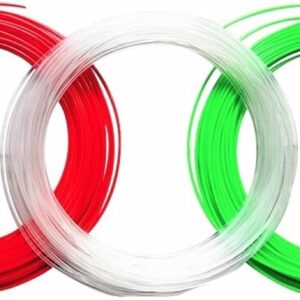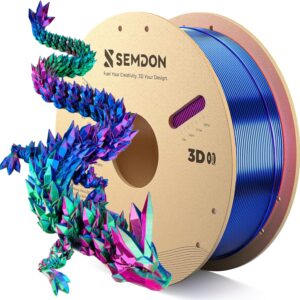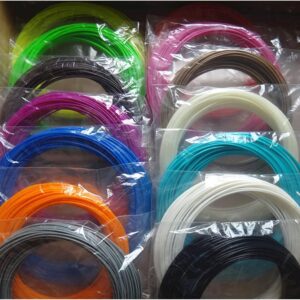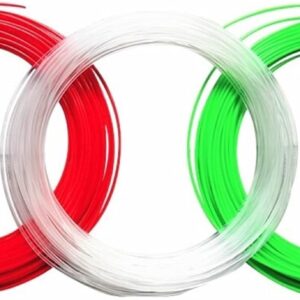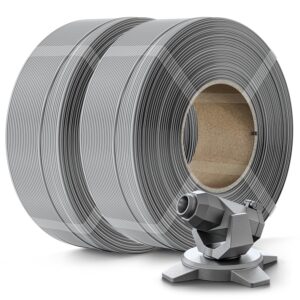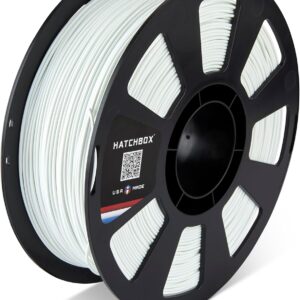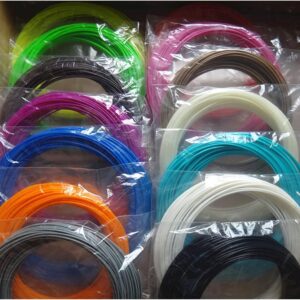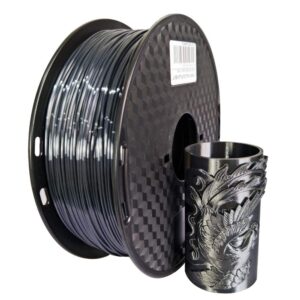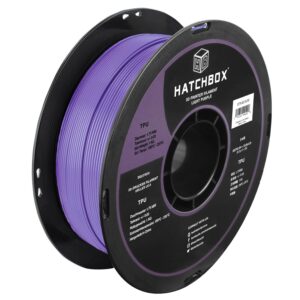Unveiling the Future of 3D Printing: The Impact of PLA Filament Composition on Strength and Sustainability
In recent years, 3D printing has transitioned from being a niche technology for hobbyists and engineers to a transformative force across multiple industries. Central to this revolution is the choice of materials, with polylactic acid (PLA) filament emerging as a cornerstone of sustainable 3D printing. As the world grapples with environmental challenges, understanding the composition of PLA and how it influences both strength and sustainability is critical. This article delves into the future of 3D printing, showcasing how advancements in PLA filament composition can impact the industry while advocating for a greener planet.
What is PLA Filament?
Polylactic acid (PLA) is a biodegradable thermoplastic derived from renewable resources, such as corn starch or sugarcane. Unlike traditional plastics made from petroleum, PLA offers an environmentally friendly alternative, making it a go-to choice for many 3D printing applications. However, the strength and durability of PLA largely depend on its specific composition, which can be modified by blending it with other materials or altering processing conditions.
The Importance of Composition
The composition of PLA plays a pivotal role in determining its mechanical properties. Variations in molecular weight, crystallinity, and the inclusion of additives can all influence a PLA filament’s strength, flexibility, and overall performance.
1. Molecular Weight
Molecular weight refers to the size of the polymer chains in PLA. Higher molecular weight leads to improved mechanical strength and durability, making the filament more suitable for load-bearing applications. Conversely, lower molecular weight PLA may be more pliable but will offer diminished strength.
2. Additives and Blends
Introducing specific additives can enhance PLA’s properties. For instance, the incorporation of impact modifiers can improve resistance to shattering, while plasticizers can add flexibility, making the filament less brittle. Furthermore, blending PLA with other biodegradable polymers can create composites that exhibit superior performance while maintaining eco-friendly characteristics.
Sustainability: A Dual Perspective
The sustainability of PLA goes beyond its renewable origins—it encompasses the entire lifecycle of the material. From production to end-of-life, the environmental footprint of PLA can be positively impacted through deliberate choices in its composition and processing.
1. Biodegradability and Recycling
One of the most appealing attributes of PLA is its biodegradability. When composted under industrial conditions, PLA breaks down into non-toxic components, returning valuable nutrients to the soil. However, this process is contingent on the right composition being used. PLA mixed with certain additives may impinge on its biodegradability; thus, it’s essential to select blends wisely.
Moreover, as the industry progresses, developing recycling protocols for PLA waste is gaining traction. Innovations in filament composition aim to enhance recyclability, allowing PLA products to have a second life, thereby reducing waste.
2. Energy Use during Production
The energy required to produce PLA is significantly lower than that of petroleum-based plastics. Innovations aimed at optimizing the manufacturing process—like using less energy-intensive materials or implementing renewable energy sources—further boost PLA’s sustainability credentials. By focusing on the composition of PLA and incorporating sustainable practices in its production, manufacturers can reduce carbon emissions and the overall ecological footprint.
Strength vs. Sustainability: A Balancing Act
The challenge for manufacturers and designers in the 3D printing landscape is to achieve a harmonious balance between strength and sustainability. While enhancing strength might typically involve the use of additional materials or processes that increase energy consumption, smarter composition choices can mitigate this impact.
1. Adaptable Applications
As industries gravitate towards 3D printing, applications for PLA continue to diversify. In sectors like automotive parts manufacturing or infrastructure construction, the demand for robust yet eco-friendly materials is escalating. Experimentation with PLA blends enables designers to create optimized solutions tailored to specific applications without compromising on sustainability.
2. The Rise of the Circular Economy
The transition toward a circular economy—a model that prioritizes reducing waste and promoting resource efficiency—aligns perfectly with PLA’s characteristics. By encouraging designs that allow for disassembly and refurbishment, physical products made from PLA can be designed with a lifecycle approach in mind. As researchers explore various PLA compositions, the potential for creating strong, reusable materials only increases.
The Future of PLA in 3D Printing
With advances in research and technology, the future of PLA filament is poised for exciting developments. Innovations in the field promise enhanced formulations that combine strength, flexibility, and sustainability. Here are several aspects to watch for:
-
Enhanced Composites: New blends of PLA with natural fibers like hemp or cellulose may offer improved strength while maintaining high levels of sustainability.
-
Advanced Recycling Techniques: Continued progress in recycling technology could allow for greater use of recycled PLA filament, reducing the demand for new raw materials.
-
Customizable Filament Production: As 3D printing evolves, customization of PLA composition could become more common, enabling users to tailor strength and flexibility according to their specific application needs.
- Bioengineering Developments: Future innovations may involve bioengineered microbes designed to produce high-performance PLA variants with unique properties.
Conclusion
The rapidly evolving landscape of 3D printing and biodegradable materials heralds a new era of creativity in manufacturing and design. As organizations weigh the importance of strength against sustainability, the advancements in PLA filament composition represent an exciting opportunity to transform industries while nurturing our planet. The choice of materials will define the future of production—committing to sustainability today shapes the innovations of tomorrow.
FAQs
Q1: What is PLA filament made from?
PLA filament is derived from renewable sources, primarily corn starch or sugarcane.
Q2: Is PLA biodegradable?
Yes, PLA is biodegradable under industrial composting conditions. However, the biodegradability can be influenced by its specific composition.
Q3: Can PLA be recycled?
While there are emerging technologies aimed at recycling PLA, it is not commonly recycled in traditional recycling facilities. New protocols are being developed to enhance its recyclability.
Q4: How does the composition of PLA affect strength?
The molecular weight, the addition of fillers, and the use of impact modifiers can all significantly influence the strength, flexibility, and durability of PLA.
Q5: Are there eco-friendly alternatives to PLA?
Yes, there are several bio-based plastics and sustainable materials in development that aim to provide similar benefits while reducing environmental impact.
Q6: What industries can benefit from PLA 3D printing?
PLA is applicable in various industries, including automotive, manufacturing, healthcare, and consumer products, especially where a combination of strength and sustainability is required.
Final Thoughts
The journey of 3D printing is interwoven with the narrative of innovation and responsibility. As we explore the nuances of PLA filament composition, we must remember that our choices today can pave the way for a sustainable tomorrow. Embracing these advancements will not only fuel the future of manufacturing but also contribute to a better, greener planet.
